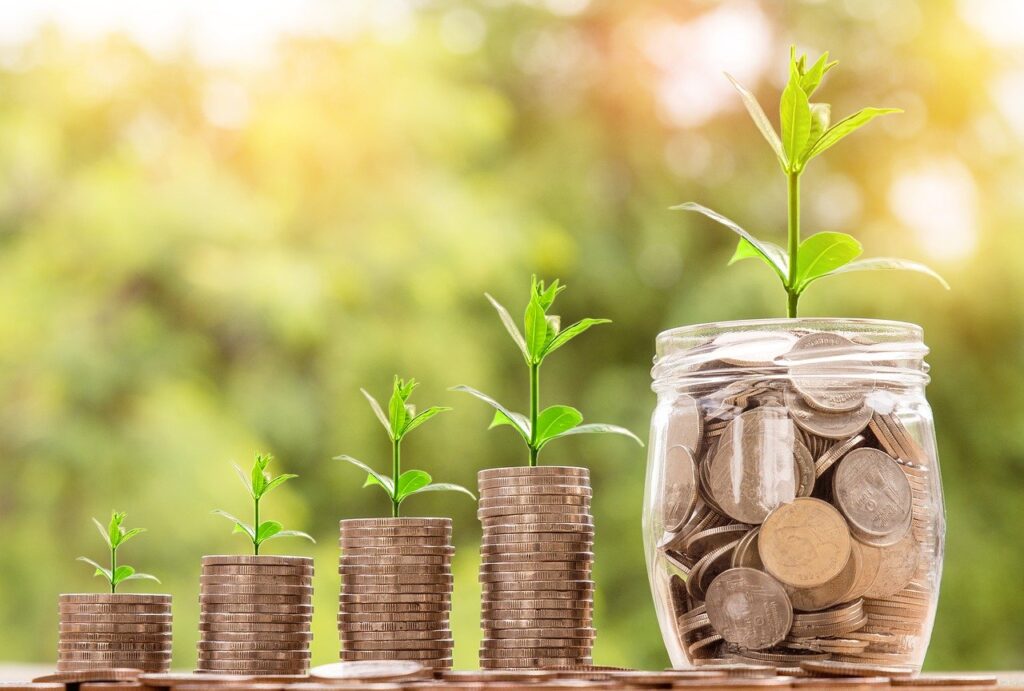As the saying goes, cash flow is king, and managing it is crucial to your wealth-building plan.
We hear a lot about negative gearing in the realm of real estate investing.
Positive gearing, on the other hand, is on the other side of the ledger.
Every investor who wants to keep their real estate holdings and retire on the income should aim for positive gearing.
It means that while the property's worth increases over time, you are not spending any of your own money on it.
Negative gearing is a topic that media commentators and industry experts frequently discuss when discussing real estate investing, but it's not the only conclusion for owners of investment properties or stock market investors.
An investment could create a portfolio of both positively and negatively geared properties. A property can also be positively geared. Although shares and other investments are subject to positive and negative gearing, this essay will concentrate on real estate.
About 30% of Australians, with 40% of those being neutrally or favorably oriented, hold an investment property, according to the Australian Taxation Office (ATO). So, 60% of investment properties are truly negatively geared.
Before accounting for tax savings, positive geared properties are those that bring in more money than they cost to maintain.
The question of whether buying positively or negatively geared properties is a superior investment strategy has generated a lot of discussion.
Continue reading to learn why and how investing in positive geared homes might help you become financially independent.
NOTE: Properties with positive cash flow may be negatively geared, but after subtracting tax savings (money lost plus asset depreciation), the property might still produce positive cash flow over the course of the financial year. Here's how positive cash flow works.
Then why is positive gearing less prevalent than negative gearing, and what exactly is positive gearing?
What does positive gearing mean?
Positive gearing, to put it simply, is when an investment's gross income exceeds its total costs of ownership and management, including interest payments on debt (payments reducing the principal component of borrowings is not included as a cost).
Before and after taxes are deducted, the investment generates a positive cash flow.
Positive Gearing
Consider the scenario where your rental income from your investment property is $2000 per month, but your mortgage payment is only $1000 per month and all other expenses (maintenance, rates, land tax, etc.) total $500 per month.
In this case, your monthly gain, net of taxes, is $500.
The best part is that even after taxes, you would probably still be ahead.
A property with positive cash flow might also create surplus income after taxes, though this is not always the case.
You may deduct expenses like depreciation and other costs at the end of the fiscal year, which results in a tax refund that is greater than the entire amount you spent for the property out of pocket throughout the year.
Finally, it is important to comprehend capital growth.
The annual capital growth of your property is the increase in value.
As long as your loan-to-value ratio is within the established bank guidelines, of course, you can frequently use this increasing equity to buy additional homes.
What should I know about positive gearing?
It's crucial to consider the potential benefits and drawbacks of owning a positively geared home, just like with any investment.
The following are some possible advantages of positive gearing:
- Passive income. If a positively geared property appreciates in value over time, you could get future capital gains in addition to a consistent income stream from it.
- Less cash flow risk. Positively geared properties pay for themselves, so you won't need to rely on other sources of income to cover your mortgage payments or think about having to sell quickly if your financial situation changes.
- Easier lending. It might be simpler to obtain a loan if you have more positive cash flow, which will increase your income.
However, there are a few factors you would want to take into consideration, like:
- The earnings are taxed. You must pay taxes on any revenue your property generates, just like you must on the pay you get from your employment.
- The greater price. An mortgage is likely to be smaller if you have more cash up front to buy your investment property, which will make it simpler to turn a profit from rental revenue.
- The asset can be more unstable. A property that is less expensive to buy might be easier to gear favorably. The value of your investment may be difficult to forecast because less expensive houses are frequently situated in locations that might not experience the same development in property value as other, more expensive areas.
As an illustration of how positive gearing may benefit an investor, suppose you decide to spend $650,000 on a property in a regional area with low vacancy rates and high rental yields.
You make a $300,000 down payment and obtain a $350,000, 30-year mortgage with an interest rate that is fixed at 3.75% for the first three years.
For the first year, you pay $13,000 in mortgage interest as well as an additional $7,200 for various property-related costs.
The entire cost of expenses for the first year is $20,200. However, because there is a high rental demand in the neighborhood, you can charge $1,000 per week, generating $52,000 in annual rental income.
You can determine that your property is favourably geared in the amount of $31,800 by subtracting the total expenses from the rental income.
Even though this sum is taxable, there are a number of unique deductions that investors can take advantage of to lower their tax liability.
Before purchasing an investment property, it's crucial to consider your status and any tax ramifications.
To determine the best investing strategy for your unique situation, be sure to speak with your financial advisor.
So Are Positive Geared Properties A Good Investment?

Unfortunately, it is difficult to evaluate whether positive geared homes are a better investment than negatively geared properties and there is no simple way to declare whether they are or are not.
This is due to the fact that an investment's value is influenced by the buyer of the property and their financial objectives.
The excess rental revenue over expenses that an investor receives can help them achieve their objective of creating a comfortable passive income.
Over time, you can produce enough passive income to totally replace your income.
However, some people make a lot of money and enjoy their jobs. Instead, they are more interested in minimizing their tax liability and maximizing capital growth.
Because of the tax advantages and potential profits from capital gains, these persons would prefer to concentrate on newer properties in high-growth areas (even if they are negatively geared).
Therefore, both properties with positive cash flow and those with negative gearing can be excellent investments.
It largely relies on the investor and their financial objectives. On the other hand, depending on the exact property purchased and the investor's management style, they might also be poor investments.
Positive Geared Properties Are Great For Generating A Passive Income
Positive geared properties have as their main benefit the ability to produce a passive income for you that can partially or completely replace your income.
The rent will pay your mortgage payments FOR YOU, which might be wonderful if you are unable to service an expensive loan.
This is also wonderful since you won't have to worry about how much money your investments will cost you each month, letting you buy as many homes as you can afford.
With positive cash flow properties, you can increase your monthly income by purchasing as many as you can afford.
We've learned via experience that, typically speaking, rent increases parallel property price increases.
You probably spend more in rent now than your grandparents did fifty years ago. If you own properties with a positive gearing, your income may increase steadily over time.
This is due to the fact that your income rises as your rent does, but your main expense (your mortgage) remains constant.
The more homes you own, the more fascinating this may be. Suppose, for instance, that each of your ten positive cash flow properties saw rent increases of $10 every year.
Afterward, your income will rise by $100 per week or $5,200 per year every 12 months (minus your increased expenses such as management costs and increased rates due to inflation).
This implies that you can accumulate wealth over time just by raising your rents.
It is excellent because you will still have money left over to enjoy with while someone else pays off your mortgage for you!
Negative gearing versus positive gearing – what’s the difference?
According to ASIC's Moneysmart, negative gearing is an investment strategy in which you borrow money to invest (gear), and the ongoing revenue the investment produces (often rent) is less than the continuous expenses (loan interest, maintenance fees, etc.).
Positive gearing, on the other hand, is when you borrow money to invest and your continued income from the venture exceeds your ongoing costs.
Due to the cash gap caused by negative gearing, the investor will typically have to pay the difference out of their own pocket.
The owner will be expecting that the property either begins to generate a profit in the future or increases in value over time in order to profit from their investment over the long term.
With positive gearing, you may utilize the increased income flow to pay down your loan, put money down for a new home, or pay for recurring needs.
It's crucial to understand the distinction between a favorably geared investment and a positive cash flow investment.
Positively geared investments bring in more money than they spend before taxes.
A different approach is needed for a positive cash flow investment, which after taxes and deductions provides more income than expenses.
An investment may receive additional revenue from a positively geared property each week or month when the rent is paid, while an investor will only receive additional income from a positive cash flow property once they have filed their annual tax return.
You might be able to determine the differences and the best solution for your situation with the aid of a financial planner.
What to consider before positively gearing an investment property?
It's normally a good idea to speak with your accountant or financial counselor before determining whether positive gearing of an investment property is appropriate for you, and to take the following into account:
- What will be your recurring expenses? Don't forget to include in the interest you'll be paying on the mortgage, along with maintenance costs, property management fees, strata or body corporate fees (if applicable), insurance premiums, council rates, and utility bills.
- What kind of rental income can you expect from the property? Remember to budget for any vacancies in between renters; you can research the average for the suburb where your property is located online at sites like realestate.com.au or domain.com.au.
- What would the tax repercussions be? Consult the ATO for guidance or a licensed tax accountant.
- Can any potential short-term losses be mitigated by capital growth? You could wish to consult a local real estate professional or look up past price increases in the region.
- What impact would future fluctuations in interest rates have on you?
- How do the property and the income it could generate fit into your entire investment plan? Are you, for instance, intending to keep the property for a number of years in order to profit from the possible capital growth? Or are you currently more concerned with the money you'll make from it?
How do fluctuations in the property market and interest rates affect gearing strategies?
It might be simpler for an investment property to be positively geared when demand is high and rentals are high and interest rates are low. The converse is typically true when interest rates are high and rental price growth is sluggish.
This is so that it will be harder to find a property that will generate a rental yield greater than the repayments due to high interest rates, which result in larger repayments on investment loans.
A excellent example of a property that could be positively geared, according to real estate website Real Estate View, is in rural areas that are seeing strong industrial and job expansion, which will increase demand for rental homes and allow owners to charge higher rent.
This is assuming that the mortgage repayments and other costs are less than the rent charged.
Could positive gearing benefit your property-investment strategy?
Positive gearing is a wise strategy to help you invest, expand your real estate portfolio, and get closer to your financial independence goals.
However, it depends on you making wise choices regarding the perfect hotspot suburb property.
Consider using the TUDI platform if you want to identify a favorably geared property and invest in real estate with greater knowledge.
Investing technology from TUDI conducts the grunt work for you.
The accessible and user-friendly website gives you the knowledge you need to succeed in the real estate market, enabling you to invest with confidence.
How do I know if positive gearing is right for me?

Whether positive gearing is a good investment strategy for you will depend on your risk tolerance, the structure of your investment portfolio, the availability of suitable properties, your income, and the way you handle your tax affairs.
It's always advisable to consult industry professionals before making any major financial decisions.
For more information, speak with your accountant or financial planner or visit the ATO or ASIC MoneySmart websites.
You've probably already made up your mind about whether or not you might be interested in a positive geared home by this point.
In the sidebar of this page, you can subscribe to my weekly newsletter if you decide it's something you're interested in.
Every week, you'll get a ton of wonderful information about positively geared properties and how you can invest in them, along with a free eBook.
If you've made up your mind that this isn't something you're interested in, I advise searching "negative geared properties" or "strong growth areas" on Google.
I really hope you found this post to be very helpful.
If it has, don't be hesitant to tell your friends about it because having supportive friends and family who share your goals can go a long way toward making you successful.
Positive gearing is generally seen as lower risk than negative gearing, as it provides more predictable returns and consistent income. The surplus income may cushion investors from any interest rate hikes, increased home loan repayments and unexpected property (or life) costs.
“You have to pay tax on that rental income; it is extra money in your bank, but then you'll pay tax. The tax rate that you pay is based on your personal tax rate, so if you're on a 20% tax rate, then you'll pay 20% tax on your additional rental income.
